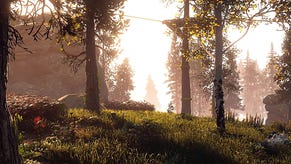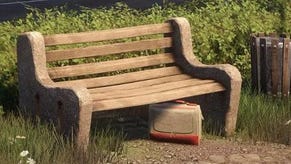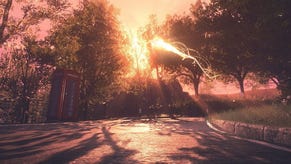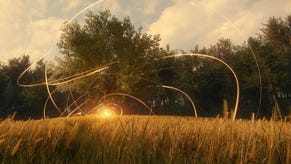Games of 2015 no. 9: Everybody's Gone to the Rapture
Still life.
There's a shot in the war movie The Thin Red Line that I can't stop thinking about: soldiers scattered over a distant hill, crouched in the grass, waiting. What happens? Nothing. Or rather, nothing you can type into a shooting script and then stick on the screen. But at the same time, everything happens: the mood shifts, the calm breaks. And all because the light has changed: a cloud moving across the sky, a darkening, a transition.
You can see almost anything in films these days - the summer blockbusters are steadily becoming lavish animations - but you rarely see this: nature captured in its restlessness, its formless drift from one thing to another. Terrence Malick could have called in CG artists if he'd wanted. He could have painted the skies with digital aircraft or dazzled us with the bloom of artificial explosions. Instead, he waited. For how long, I have no idea. He rolled film and waited for the light to change.
I suppose Everybody Goes to the Rapture is a bizarre inversion of that: CG imagery - the CryEngine, no less - employed to build nature from scratch, to capture the wind moving through trees, bracken crunching underfoot, a gate creaking on its hinges. This is the video game as landscape - countryside, farmland, a few houses. A place where something has happened, and where you might be able to tease it all out as the light changes, as one strand of thought twists with another, as a cloud moves across the sky. A transition.

If this is a 'walking simulator', then what is Uncharted? What is The Last of Us? So many narrative games take this path, threading us through dioramas that reveal the story in the ideal order, and hope to make us feel a part of the action. The genius of Rapture is that it's honest about it, and I think it's honest about its limitations. What's the point of rock-climbing, really, when there's a set path, laden with key-framed hotspots of faux peril? What's the point of a shoot-out when the territory announces it all in advance by breaking itself down into handy pieces of cover, and when the dynamism of a set-piece - its thrilling unpredictability - has to be weighed against the heft of an immersion-shattered death-and-restart?
No crouching in Rapture, then. No reloading. No missing a jump. No people - at least not in the sense that video games so often employ them. One rubbery-skinned video game human would break the spell here, with their lips that aren't quite right, their eyes and shoulders and stance that are all just a little bit off. Instead you hear the voices, you see the vague shapes picked out in flecks of golden light. It's not much, but it's enough. It's all just enough. Just enough of a trail to pick through the woods, just enough of a sense, in amongst the muddle of objects in a person's house, to construct an idea of who they are, just enough of a prompt, in an empty village hall where a play has been halted mid-performance, to feel a genuine sense of loss, a genuine pang, for children you never see, for scenes you never truly witness.
There's so much in Rapture that's great that it's worth remembering all the things that aren't in it, whose absence makes the game even greater. This is a game that understands the limits of what it can do, and abides by those limits, empowered by the restrictions rather than hobbled. It is a game that understands that sometimes you wait and the light changes and that is enough.









